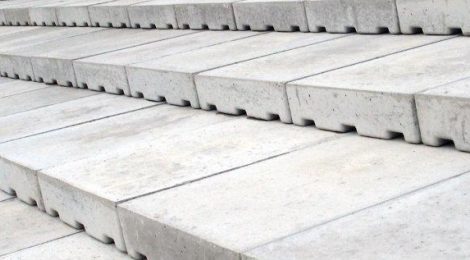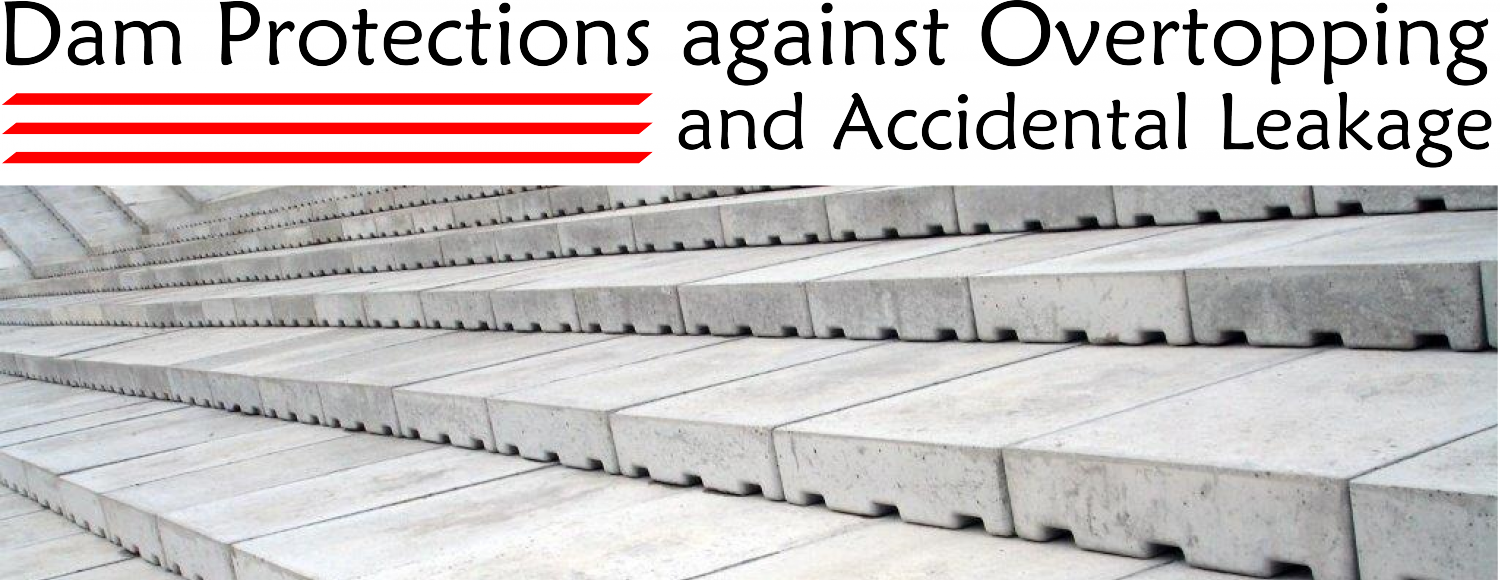
DIABLO Project: Wedge-shaped blocks protections
DIABLO Project (RTC-2014-2081-5): Wedge-shaped blocks protections
Wedge-shaped blocks (WSB) (Figure 1) are attracting increasing attention as protection against overtopping for earth and rock-fill dams, and constitute a promising technology from a cost-effective point of view since they can be located over the downstream dam shoulder. Although several examples of application exist and work properly [1] (Figure 2), some aspects of the technology merit additional research and improvement for further expansion.
Figure 1. Scheme of operation of WSB protections, including the role of the supporting layer.
Figure 2. Left: Barriga Dam, general view of WSB spillway. Central: Spillway operation. Right: detail of the construction of WSB protection. [1]
In this framework, the R+D project DIABLO is currently under development whit the aim of improving current design criteria for WSB spillways. The project is based on physical and numerical modeling campaigns. The consortium of companies PREHORQUISA and DACARTEC and also the research organizations Dam Safety Research Group (SERPA) of the Technical University of Madrid (UPM) and the International Center for Numerical Methods in Engineering (CIMNE) are involved in the project.
Two key issues dealt with in DIABLO project are the determination of the thickness and characteristics of the drainage layer and the choice of an appropriate block size. During overtopping, part of the overflow leaks through the joints between blocks, hence circulating through the granular material. The permeability and thickness of the supporting layer must be sufficient to prevent the flow from generating pressure on the bottom side of the blocks, which together with the weight of the blocks and the slope of the downstream face, directly condition block stability.
We show below some tests concerning block stability, which highlight the vibration phenomena for an extreme scenario. This scenario was simulated with the Discrete Element Method (DEM). In the DEM, the domain of analysis is discretized into rigid particles, whose movement is defined by the standard rigid-body dynamics equations. Spheres are usually employed in DEM, to simplify the geometry and the computation of inter-particle forces, which results in lower computational cost [2] [3]. To consider non-spherical elements (as in the case of WSB), a method has been implemented to generate elements of arbitrary shape with sphere clusters. The result is a rigid element with the appropriate center of gravity and inertia (Figure 3). The numerical simulations carried out considered hydrodynamic forces during overflow and contacts between blocks and the drainage layer.
Video 1 shows block stability observed in experimental tests, and video 2 shows block stability obtained by means of numerical simulation for higher flows and extreme pressure on the bottom side of the blocks.
Additional tests are currently under development, in the framework of the DIABLO project, in order to define the state of vibration properly.
Figure 3. Left: Sphere cluster considered. Right: Numerical model. The configuration includes 90 blocks distributed in 20 rows, resting on a rigid contour with slope 2H/1V.
Video1. Experimental test. Low vibration is observed.
Video2. Numerical simulation, extreme flow scenario. An important vibration is observed.
References
[1] Morán, R., & Toledo, M. A. (2014). “Design and construction of the Barriga Damspillwaythroughanimprovedwedge-shaped block technology”. Canadian Journal of Civil Engineering, 41(10), 924-927.
[2] Casas, G., Mukherjee, D., Celigueta, M. A., Zohdi, T. I., & Onate, E. (2015).“A modular, partitioned, discrete element framework for industrial grain distribution systems with rotating machinery”.Computational Particle Mechanics, 1-18.
[3] Santasusana, M., Irazábal, J., Oñate, E., and Carbonell, J. M. (2016).“The Double Hierarchy Method.A parallel 3D contact method for the interaction of spherical particles with rigid FE boundaries using the DEM”.Computational Particle Mechanics, 1-22.
About Javier San Mauro
Javier San Mauro received the Degree on Civil Engineering from the Technical University of Madrid, specializing in Hydraulics and Energy. He is working for the International Center for Numerical Methods in Engineering (CIMNE) since October 2011.

